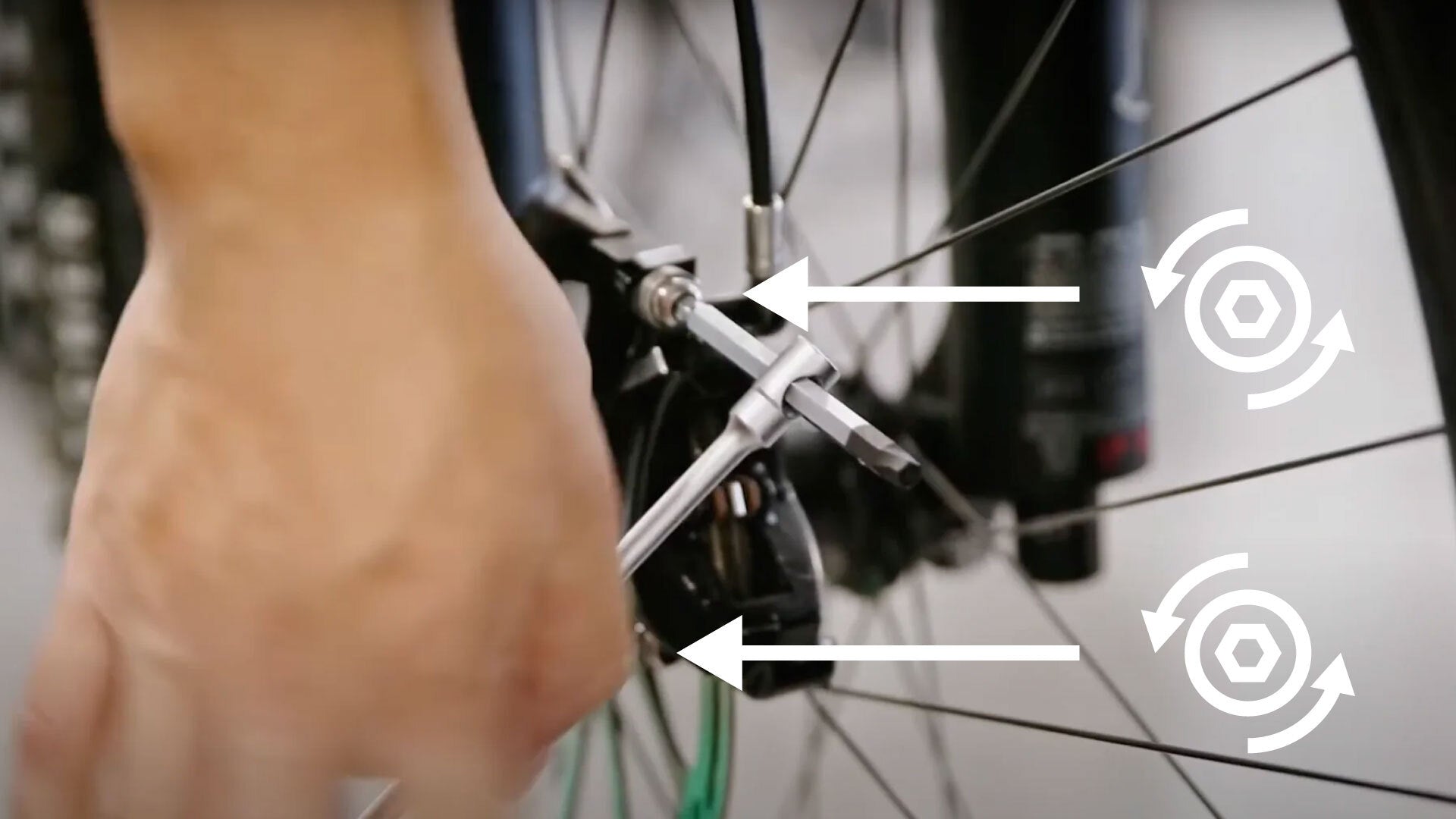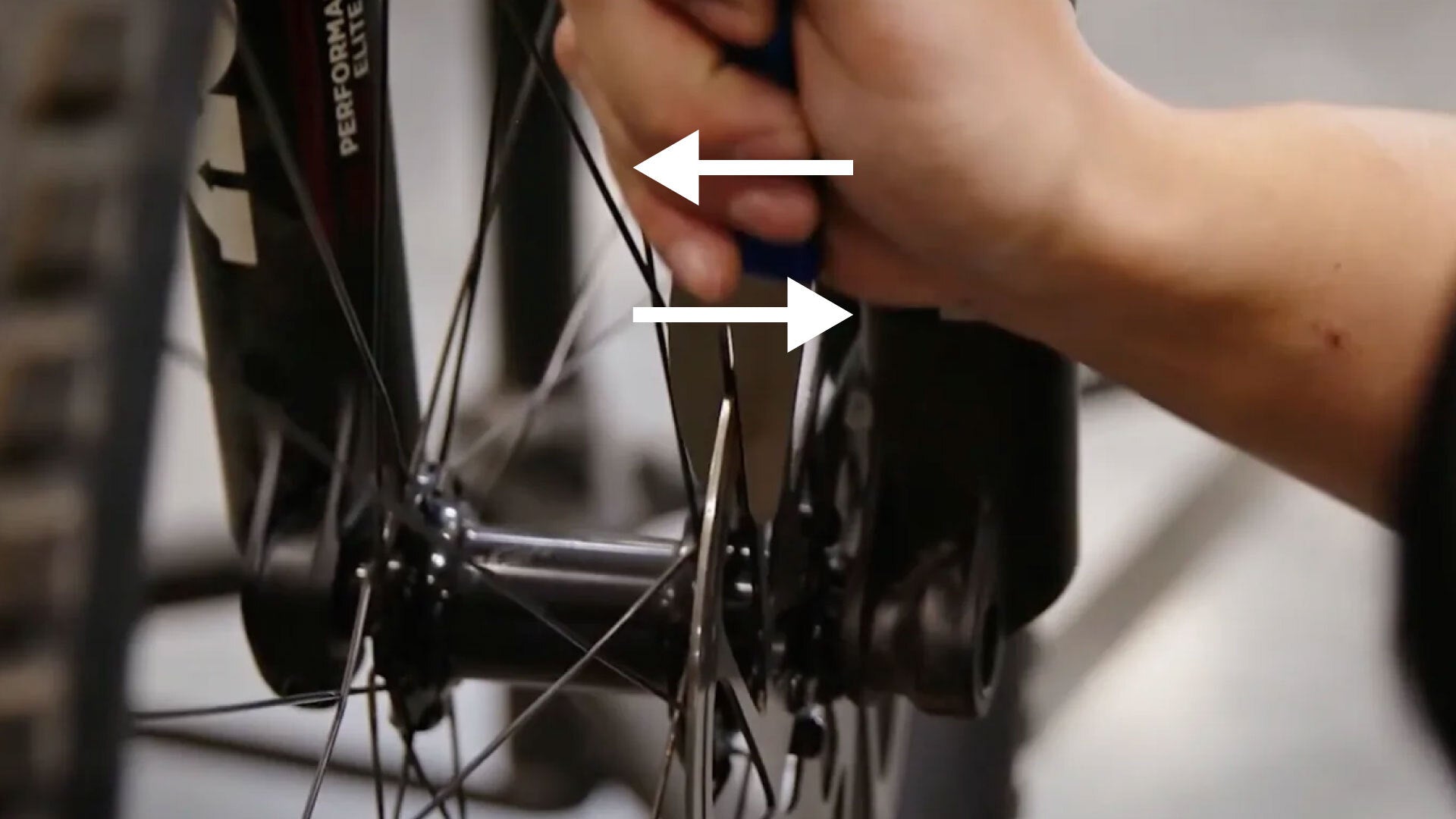Here is an easy trick to drive yourself crazy: Just go for a ride while your disc brakes are rubbing. Brake rub is one of the most irritating noises a bike can make, but there’s no reason to live with it, because it’s so easy to fix! Here’s what you need to know.
How to fix disc brake rub
There are two main reasons your disc brakes might be rubbing. Either the brake caliper is not aligned correctly, or the brake rotor isn’t straight. Or, you could have both problems.
First, put your bike in a bike stand (or have a patient friend hold it) so you can spin the wheels freely.
[product-block handle="6870209790144-feedback-sports-recreational-repair-stand-2-0"/]
Identify the cause of brake rub — either caliper misalignment or a bent rotor — by spinning the affected wheel and listening to the rubbing noise. If the brake rub is constant, address caliper alignment first. If the brake rub is more intermittent and rhythmic, your brake rotor is bent, and that noisy spot is where it’s rubbing the pads. Your rotor will need to be trued.
Note: Watch your fingers! Don’t get so focused on the brakes that you get a finger caught in the spokes or rotor while the wheel is spinning. I say this from experience ...
How to align brake calipers
 To align your brake caliper, you’ll need to loosen the bolts that mount the caliper to the frame; 5mm hex bolts are common on mountain bike calipers and older post-mount road and gravel calipers. T25 Torx bolts are typical on newer flat-mount road and gravel calipers
To align your brake caliper, you’ll need to loosen the bolts that mount the caliper to the frame; 5mm hex bolts are common on mountain bike calipers and older post-mount road and gravel calipers. T25 Torx bolts are typical on newer flat-mount road and gravel calipers
[product-block handle="park-tool-professional-hex-wrench-set-hxs-1-2"/]
[product-block handle="park-tool-tws-3-torx-compatible-3-way-wrench"/]
Loosen the bolts that hold the caliper to the frame just enough to allow the caliper to wiggle side-to-side. To align the caliper, squeeze or pump the brake lever. The brake pads compressing will center the caliper over the rotor. Then, hold the brake lever in while you retighten the bolts to keep the caliper positioned.
 When retightening the bolts, make sure to alternate between them, tightening each a little at a time. If you crank one bolt all the way down before tightening the other, you may shift the caliper out of position.
When retightening the bolts, make sure to alternate between them, tightening each a little at a time. If you crank one bolt all the way down before tightening the other, you may shift the caliper out of position.
If the caliper isn’t fully aligned after this, you can repeat the process, or make small adjustments by looking directly through the brake caliper and eyeballing it. Use a flashlight or hold up a piece of white paper behind the caliper to see the rotor’s position between the brake pads. Loosen the mounting bolts and nudge the caliper until it’s aligned and the brake rub goes away.
[button]Shop All Tools[/button]
How to true brake rotors
Disc brake rotors can get bent from crashes, leaning your bike against things, or extreme heat during hard use. Sometimes, even new rotors need to be trued out of the box.
The pro mechanics at The Pro’s Closet like to use a dedicated brake rotor truing tool, but you can also use an adjustable crescent wrench or Knipex pliers. Just make sure the jaws are clean so you don’t contaminate your rotors with oil or grease.
Park Tool DT-2C Rotor Truing Fork - $17.95
 Slowly spin the wheel and note the spots where the rotor is rubbing. Identify which brake pad is touching the rotor. Bend the rotor in the opposite direction, away from the rubbing side.
Slowly spin the wheel and note the spots where the rotor is rubbing. Identify which brake pad is touching the rotor. Bend the rotor in the opposite direction, away from the rubbing side.
Slot the truing tool over the rotor and use light pressure to flex the rotor and bend it straight. Be gentle at first and go slow. Repeat as necessary until the rotor no longer rubs the brake pads. If your rotor is really bent, say from a crash or impact, it may be impossible to get perfectly straight and you should consider replacement.
[button]Shop All Tools[/button]
Other brake rub causes
If you accidentally squeezed a brake lever while the wheel was removed, or recently installed new rotors, your brake pistons may be too far advanced. You’ll need to push the pistons back into your brake caliper to eliminate brake rub.
There are dedicated tools for pressing brake pistons, but a tire lever will work in a pinch. Again, be sure whatever tool you use is clean to avoid contaminating your brake pads.
Park Tool PP-1.2 Hydraulic Piston Press - $19.95
Remove your wheel and wedge the piston press between your brake pads. Use the press as a lever to spread the pads and push the pistons all the way back into the caliper. Reinstall the wheel and pump the brake lever until the pads contact the rotor. This resets the brake pad position. You may need to realign your caliper afterwards.
[newsletter]
Hopefully, this helps you silence brake rub on your bike. Brakes can be finicky, so if you have any special tips or tricks for getting rid of brake rub that I haven’t covered, let me know in the comments!
We meticulously (and independently) pick every product, and if you purchase through our links we may earn a commission.












